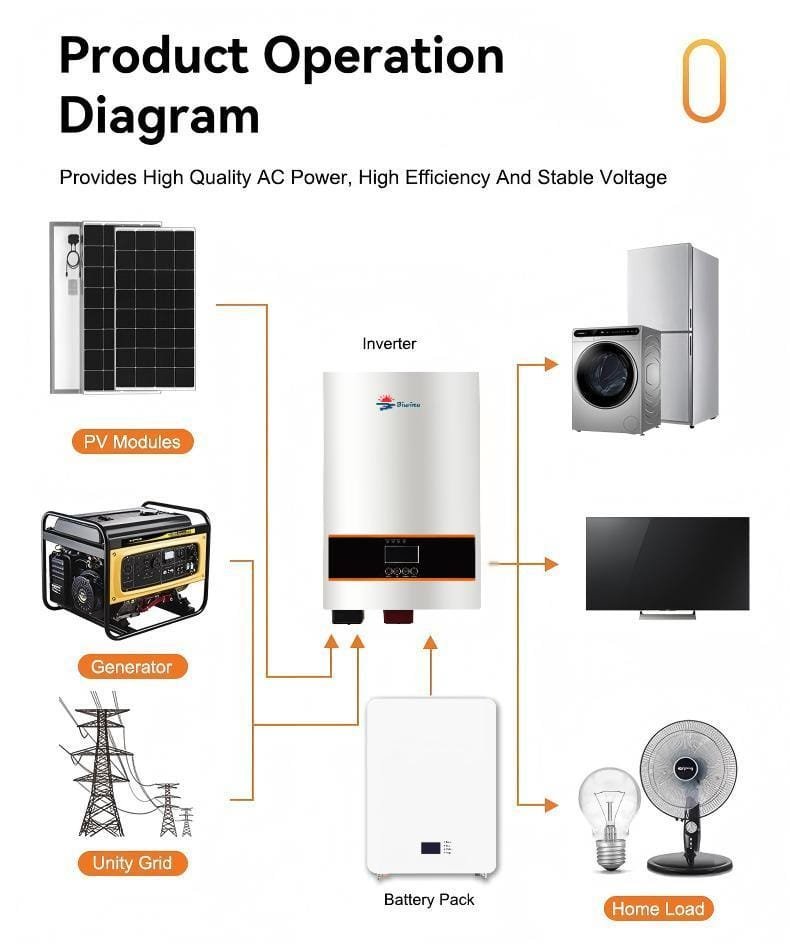Why Transformer-Based Low-Frequency Inverters Are the Smart Choice for Inductive Loads
Meta Title:
Transformer-Based Low-Frequency Inverters for Inductive Loads | SWN Inverter
Meta Description (≤160 chars):
Discover why low-frequency inverters with transformers are ideal for inductive loads like pumps and motors—longer life, better surge, more stability.
🔋 Introduction
Off-grid solar systems often face one major technical challenge: powering inductive loads such as water pumps, refrigerators, compressors, and electric motors. These devices demand high surge power and voltage stability, especially at startup. In this context, transformer-based low-frequency inverters consistently outperform their high-frequency counterparts—making them a superior choice for importers and solar integrators serving heavy-duty applications.
⚙️ What Is a Transformer-Based Low-Frequency Inverter?
Unlike high-frequency inverters that rely on compact high-speed circuits, low-frequency inverters use a large toroidal transformer to convert DC into pure sine wave AC output. This traditional approach may be bulkier, but it offers significantly better performance and protection, especially for demanding loads.
🚀 Advantage 1: Superior Surge Handling for Inductive Loads
Inductive loads require a 2–7x surge current during startup. A small pump motor rated at 1.5kW may demand over 4.5kW momentarily when starting.
✅ Low-frequency inverters can deliver 200–300% surge capacity for several seconds.
❌ High-frequency inverters often trip or shut down when faced with such loads.
Real-world Example:
In a Nigerian off-grid farm, high-frequency inverters frequently failed to start irrigation pumps. After switching to SWN’s transformer-based low-frequency model, performance became stable and uninterrupted.
💡 Advantage 2: More Stable Performance in Harsh Conditions
Transformer-based inverters handle power fluctuations and load shocks with ease. They:
Maintain voltage quality under load
Operate reliably under high temperature and humidity
Are less sensitive to poor battery conditions or grid noise
This makes them ideal for off-grid regions in Africa, South Asia, and the Middle East—where power environments are often unpredictable.
🔧 Advantage 3: Longer Operational Lifespan
Because of their simple yet durable internal structure, transformer-based inverters can last 10–15 years or more with proper use.
| Inverter Type | Typical Lifespan | Maintenance Needs |
|---|---|---|
| High-Frequency | 5–8 years | Higher |
| Low-Frequency (Transformer) | 10–15 years | Low |
These inverters are less vulnerable to thermal stress, component aging, and surge-related damage—resulting in lower long-term costs for system owners and fewer returns or warranty claims for importers.
🌍 Why Importers and Distributors Prefer Transformer-Based Inverters
For solar companies and distributors in Africa, the Middle East, Southeast Asia, and Latin America, the benefits are clear:
🔩 Fewer failures = stronger reputation
📦 Lower replacement rate = reduced logistics cost
💬 Customer satisfaction = higher repeat sales
🛠️ OEM/ODM flexibility = branding advantage
📦 Recommended Applications
Rural homes and farms with deep well pumps
Cold storage facilities needing reliable refrigeration
Clinics, hospitals, and telecom systems
Industrial off-grid microgrids
✅ Final Thoughts
While high-frequency inverters may be smaller and cheaper, transformer-based low-frequency inverters deliver what really matters: reliability, longevity, and resilience under pressure.
If you’re an importer or solar solutions provider seeking inverter products that last longer, perform better, and build trust, low-frequency technology is your best investment.
📩 Call to Action
Looking for a reliable inverter partner?
Contact SWN Inverter for high-performance, transformer-based solutions tailored for your off-grid markets.
👉Contact Us:email:info@swnpower.com whatsapp:+86-15914572726

